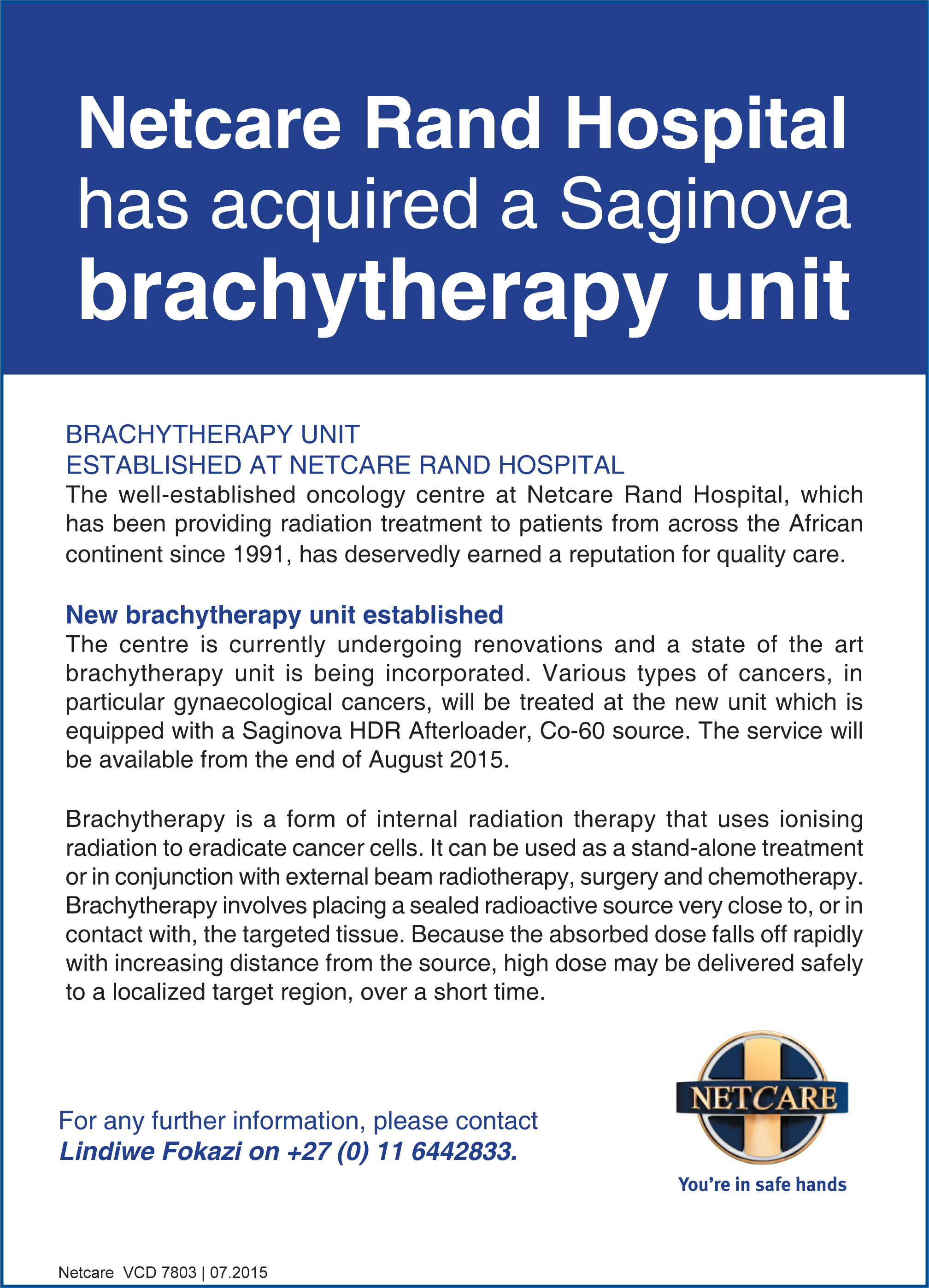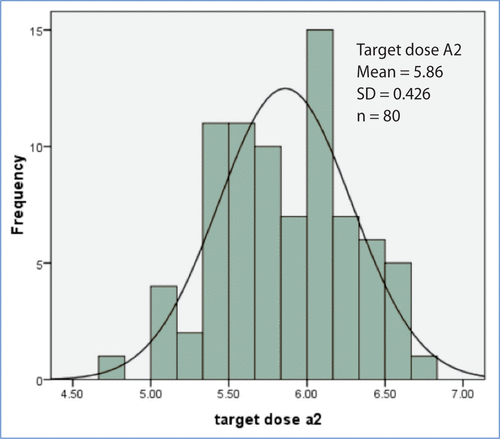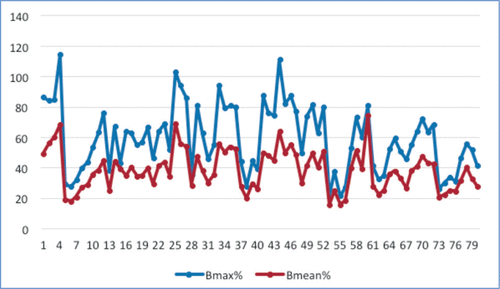Abstract
Objectives: The objective of the study was to examine the dosimetry of intracavitary radiotherapy (ICRT) in carcinoma of the cervix using cobalt-60 (Co-60) as source of ICRT, and as an alternative to iridium-192 (Ir-192).
Design: This was a retrospective study.
Subjects and setting: The study was on 80 ICRT patients attending the radiotherapy department at Maharana Bhupal Government Hospital, Udaipur, India.
Outcome measures: The dosimetry of ICRT was studied retrospectively in 80 related applications. The dose to point A, 60 Gy isodose reference volume, and bladder and rectum maximum and mean doses were defined.
Results: It was found that dosimetry with Co-60 as a brachytherapy source was consistent with the International Commission on Radiation Units (ICRU 38) recommendations.
Conclusion: Co-60 is a logical alternative to Ir-192 in low socio-economic settings when repeated changing of the source is not an option.
Introduction
Carcinoma of the cervix is the second most common malignancy ion females in India. According to the Globcan database,Citation1 the incidence of this type of cancer in India was 123 000 in 2012, and accounts for one fifth of the global burden of cervical cancer.Citation1
Patients usually present at our institute in the advanced stages of cancer because of lack of health awareness, poor genital hygiene and lack of proper screening facilities.Citation2
Multiple randomised trials performed in the past have proved that external beam radiotherapy (EBRT), followed by intracavitary radiotherapy (ICRT), constitutes the main treatment for bulky stage IB2 and IIA to stage IVA cancer.Citation3,4 ICRT is the cornerstone for increasing the control rate and improving the survival rate because high doses of 80-85 Gy cannot be given by EBRT alone.Citation5,6 High-dose rate (HDR) brachytherapy has become more popular than low-dose rate brachytherapy because the patient can be treated as an outpatient and does not need to be hospitalised and can avoid the complications of prolonged immobilisation.Citation6
The most common source of ICRT used worldwide is iridium-192 (Ir-192), which has a half-life of 73.8 days, and has to be replaced every 3-4 months. By comparison, the half-life of cobalt-60 (Co-60)Citation7 as a source of ICRT is 5.26 years, and it is available in miniaturised form. Typically, with respect to intervals for source replacements, there are 25 source exchanges using Ir-192, compared to just a single one for Co-60, resulting in reduced operating costs.Citation8,9 It is very logistical and economical in low-resource settings, like India, to use Co-60 for HDR brachytherapy. Moreover Co-60 sources have higher air kerma rate constants than other brachytherapy sources.
At our centre, we use an Eikert and Zeigler® HDR remote afterloading HDR brachytherapy Co-60 radionuclide source, together with the Bebig® HDR plus 2.5 treatment planning system.
Method
This study was conducted retrospectively on 80 applications for ICRT in patients with histologically proven carcinoma of the cervix attending the radiotherapy department at Maharana Bhupal Government Hospital, Udaipur, India, with stage I-IIIB cancer, from June 2012 to June 2013.
Patients received an EBRT dose of 45-50 Gy in 25 fractions, at 180-200 cGy per fraction, five days a week. ICRT was started one week after completion of the EBRT using a Fletcher-Suit® applicator. A total of four sessions, using 6 Gy each, were delivered 72 hours apart under general anesthesia. A Foley catheter was inserted into the urinary bladder and the balloon inflated with 7 ml of diluted urograffin dye [according to the International Commission on Radiation Units (ICRU 38) recommendations].Citation10 After the insertion of an appropriate applicator, the vagina was packed with gauze to further displace the bladder anteriorly and the rectum posteriorly. An additional rectal marker was placed in the rectum to identify the ICRU rectal points. Treatment planning was carried out using the Bebig® HDR plus 2.5 treatment planning system. Dose prescription was specified to point “A”. Multiple points consistent with the ICRU 38 recommendations were located and used for treatment planning and dose optimisation to point A, point B, and the bladder and the rectum.Citation11−14
Results
The results were as follows:
| • | Dose to point A1: In all 80 applications, the mean dose to point A1 was 5.80, and the range was from 4.91-6.92 Gy. In 66 applications, the dose received to point A1 was the dose within 1 standard deviation (SD) of the mean dose, i.e. 5.41-6.19 Gy, and in 67 applications, it was within ± 10% of the prescribed target dose (5.4-6.6 Gy) (Table ). | ||||
| • | Dose to point A2: In all 80 applications, the mean dose to point A2 was 5.806, and the range was from 4.77-6.76 Gy. In 55 applications, the dose received to point A2 was within 1 SD of the mean dose, i.e. 5.54-6.28 Gy, and in 67 applications, it was within ± 10% of the prescribed dose (5.4-6.6 Gy). | ||||
| • | Volume covered by 60 Gy (V60Gy): In all 80 applications, the mean of the V60Gy was 290.5 cm3, and the range was 125-476 cm3 (Table ). In 50 applications, the V60Gy was from 213.6-367.4 cm3 (within 1 SD of the mean volume). | ||||
| • | Maximum bladder dose (Bmax): The mean of the Bmax in this study was 3.55 Gy, and it ranged from 1.27-6.88 Gy (Table ). In 63 of the 80 applications (78.85%), the Bmax was less than 80% of the prescribed dose to point A (ICRU), and in 41 of the 80 applications (51.25%), the Bmax was less than 60%. | ||||
| • | Average bladder dose (Baverage): The mean of the Baverage in this study was 2.29 Gy, and it ranged from 0.93-4.45 Gy (Table ). In 77 of the 80 applications (96.25%), the Baverage was less than 4 Gy, and in 31 of the 80 applications (38.75%), the Baverage was less than 2 Gy. | ||||
| • | Maximum rectal dose (Rmax): The mean of the Rmax in this study was 3.76 Gy, and it ranged from 1.53-5.45 Gy (Table ). In 65 of the 80 applications (81.25%), the Rmax was less than 80% of the prescribed dose to point A (ICRU), and in 36 of the 80 applications (45%), the Rmax was less than 60%. | ||||
| • | Average rectal dose (Raverage): The mean of the Raverage in this study was 3.30 Gy, and it ranged from 1.26-4.78 Gy. In 63 of the 80 applications (78.75%), the Raverage was less than 4 Gy, and in five of the 80 applications (6.25%), the Raverage was less than 2 Gy (Table ). | ||||
Table I: The dose distribution at point A
Table II: Standard deviation in the 60 Gy isodose reference volume
Table III: Distribution of the maximum bladder dose
Table IV: Distribution of the mean bladder dose
Table V: Distribution of the maximum rectal dose
Table VI: Distribution of the mean rectal dose
Discussion
Bahreyni Toossi et alCitation14 of Iran conducted a retrospective analysis of the rectal and bladder dose in 40 gynaecological brachytherapy treatments in 28 patients using the GZP6® HDR afterloading brachytherapy unit. The average of the Rmax and Bmax values was found to be 7.62 Gy (a range of 1.72-18.55 Gy), and 5.17 Gy (a range of 0.72-15.85 Gy), respectively, while in our study, the average of the Rmax and Bmax dose values was found to be 3.76 Gy (a range of 1.53-5.45 Gy), and 3.55 Gy (a range of 1.27-6.88 Gy), respectively.
DattaCitation12 reported that the mean bladder and rectum dose were 4.01 Gy and 4.12 Gy, respectively. Similarly, Jamema et alCitation11 reported that the mean dose to the rectal points was 5.16 Gy, and to the bladder 7.12 Gy. However, in our study, the average calculated dose of the bladder and rectum was 2.29 Gy (41% to point A, a range of 0.93-4.45 Gy), and 3.3 Gy (56.9% to point A, a range of 1.26-4.78 Gy), respectively.
Our study revealed that for 63 of the 80 applications (78.85%), the Bmax was less than 80% of the prescribed dose to point A, and in 41 of the 80 applications (51.25%), the Bmax was less than 60%. Similarly, in 65 of the 80 applications (81.25%), the Rmax was less than 80% of the prescribed dose to point A, and in 36 of the 80 applications (45%), the Rmax was less than 60%.
Conclusion
This study concluded that ICRT using Co-60 as a ICRT source is dosimetrically comparable with Ir-192, and that it is a logical and economical option for brachytherapy, as it provides the same scientific and technical performance as Ir-192. There are potential advantages to using Co-60 as a ICRT source owing to its longer half-life, i.e. of 5.3 years vs. 74 days. This makes it an interesting alternative, especially in high-workload centres in developing countries.
References
- Ferlay J, Shin HR, Bray F, et al. Estimates of worldwide burden of cancer in 2008: GLOBOCAN 2008. Int J Cancer. 2010;127(12): 2893–2917.
- Sankaranarayanan R, Thara S, Esmy PO, Basu P. Cervical cancer: screening and therapeutic perspectives. Med Princ Pract. 2008;17(5): 351–364.
- Viswanathan AN, Beriwal S, De Los Santos JF, et al. American Brachytherapy Society consensus guidelines for locally advanced carcinoma of the cervix. Part II: high-dose-rate brachytherapy. Brachytherapy. 2012;11(1): 47–52.
- Eifel P. Patterns of radiotherapy practice for patients treated for intact cervical cancer in 2005-2007: a QRRO study. Int J Radiat Biol Phys. 2010;78: S119.
- Tod M, Meredith WJ. Treatment of cancer of the cervix uteri, a revised Manchester method. Br J Radiol. 1953;26(305): 252–257.
- Jain Vandana S, Singh Kailash K, et al. Radical radiotherapy treatment (EBRT + HDR-ICRT) of carcinoma of the uterine cervix: outcome in patients treated at a rural center in India. J Cancer Res Ther. 2007;3(4): 211–217.
- Palmer A, Mzenda B, Hatman O, Hosseini-Ashrafi M. The physics, economics and clinical use of Co-60 for high dose rate brachytherapy. Cardiff: Institute of Physics and Engineering in Medicine; 2010.
- Strohmaier S, Zwierzchowski G. Comparison of Co-60 and Ir-192 sources in HDR brachytherapy. J Contemp Brachytherapy. 2011;3(4): 199–208.
- Andrassy M, Niatsetski Y. Co-60 versus Ir-192 in HDR brachytherapy: scientific and technological comparison. Rev Fis Med. 2012;13(2): 125–130.
- International Commission on Radiation Units and Measurements. Dose and volume specification for reporting intracavitary therapy in gynaecology. Bethesda: ICRU, 1985.
- Jamema SV, Saju S, Mahantshetty U, et al. Dosimetric evaluation of rectum and bladder using image-based CT planning and orthogonal radiographs with ICRU 38 recommendations in intracavitary brachytherapy. J Med Phys. 2008;33(1): 3–8.
- Datta NR, Srivastava A, Maria Das KJ, et al. Comparative assessment of doses to tumor, rectum, and bladder as evaluated by orthogonal radiographs vs. computer enhanced computed tomography-basedintracavitarybrachytherapyincervical cancer. Brachytherapy. 2006;5(4): 223–229.
- Eich HT, Haverkamp U, Micke O, et al. Dosimetric analysis at ICRU referencepointsinHDR-brachytherapy of cervical carcinoma. Rontgenpraxis. 2000;53(2): 62–66.
- Bahreyni Toossi MT, Ghorbani M, Makhdoumi Y, et al. A retrospective analysis of rectal and bladder dose for gynecological brachytherapy treatments with GZP6 HDR after loading system. Rep Pract Oncol Radiother. 2012;17(6): 352–357.





